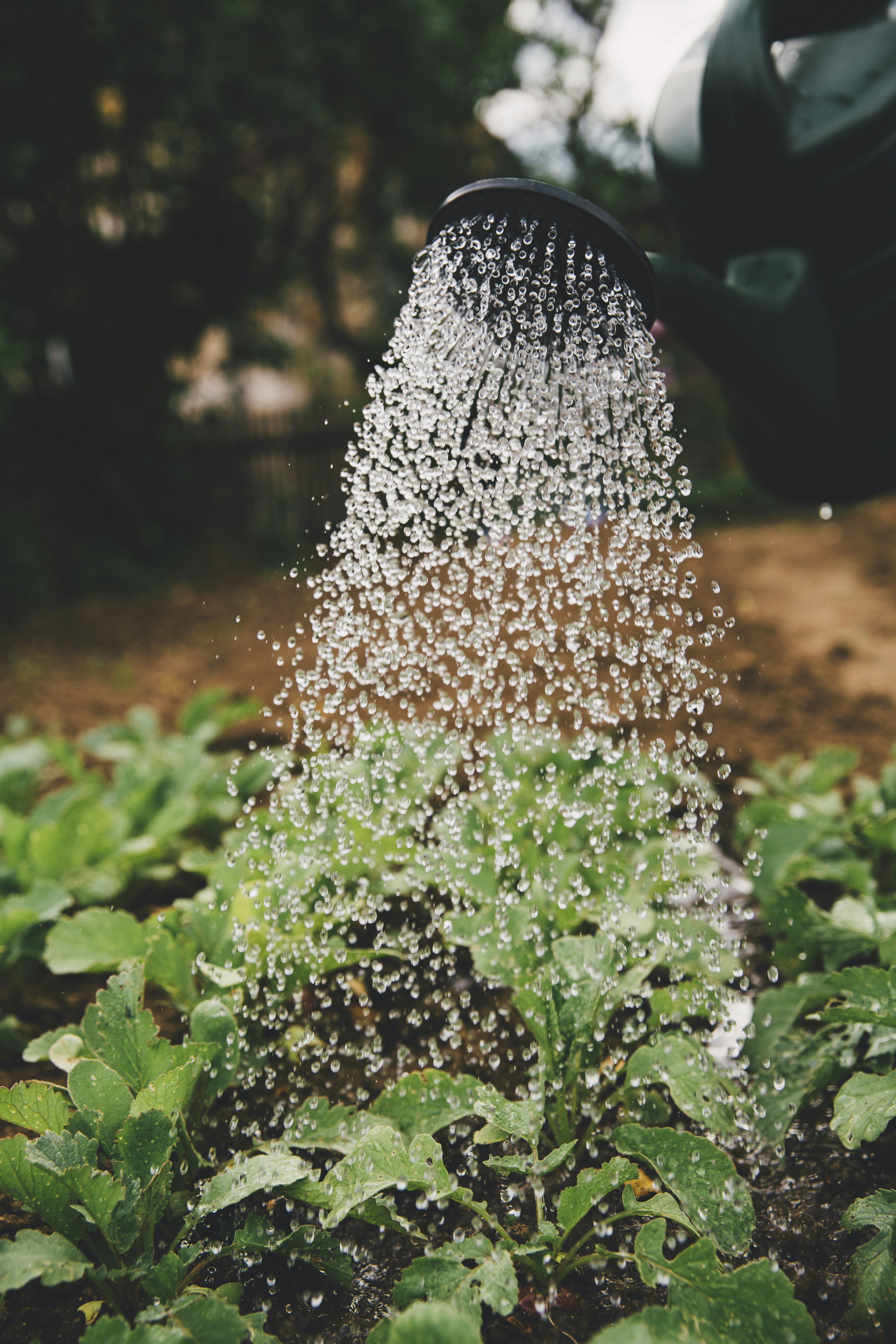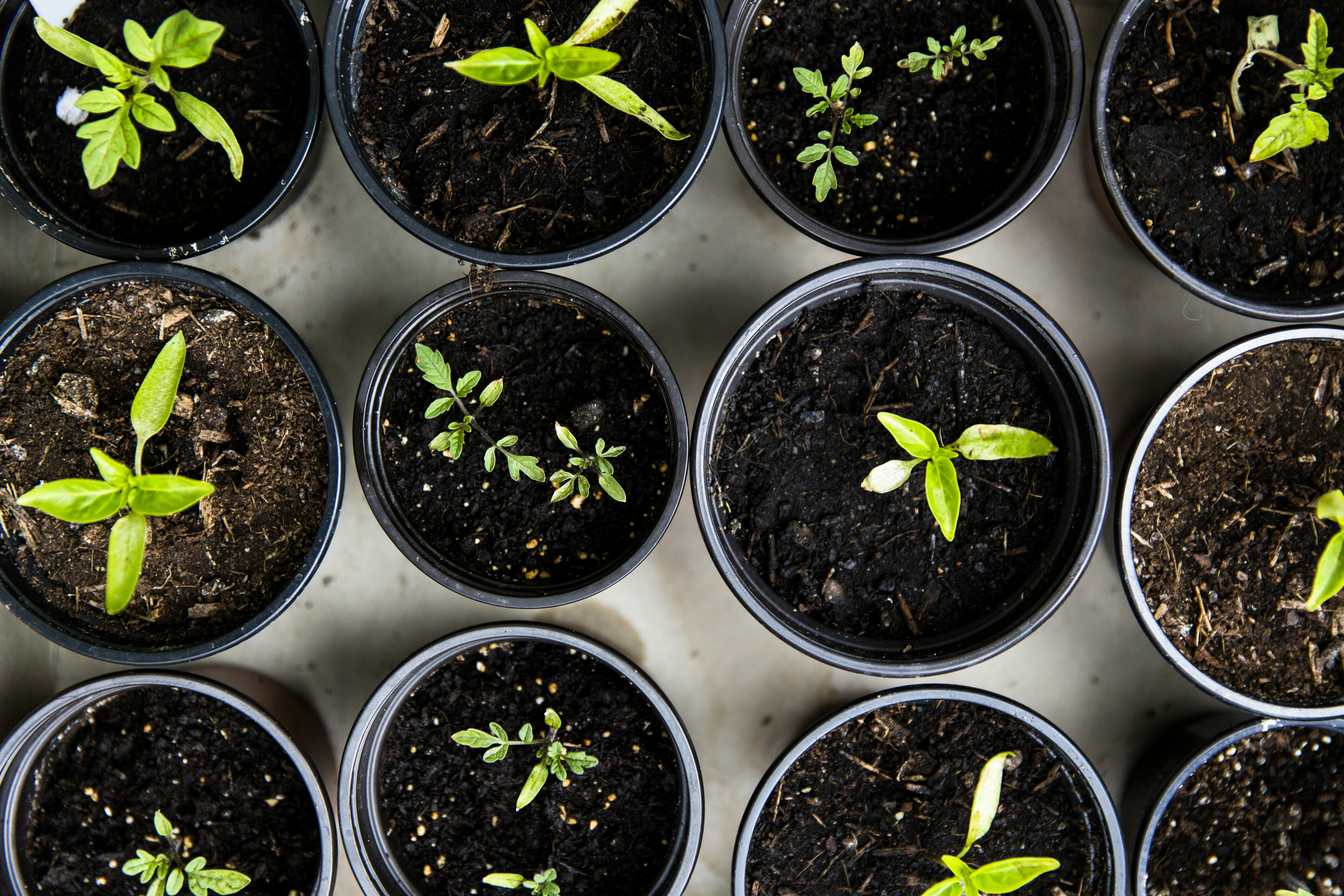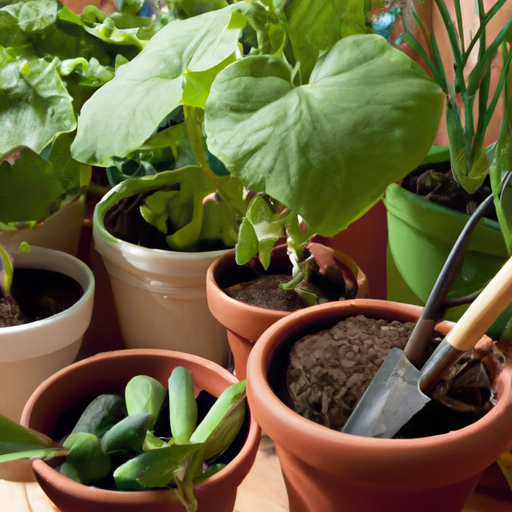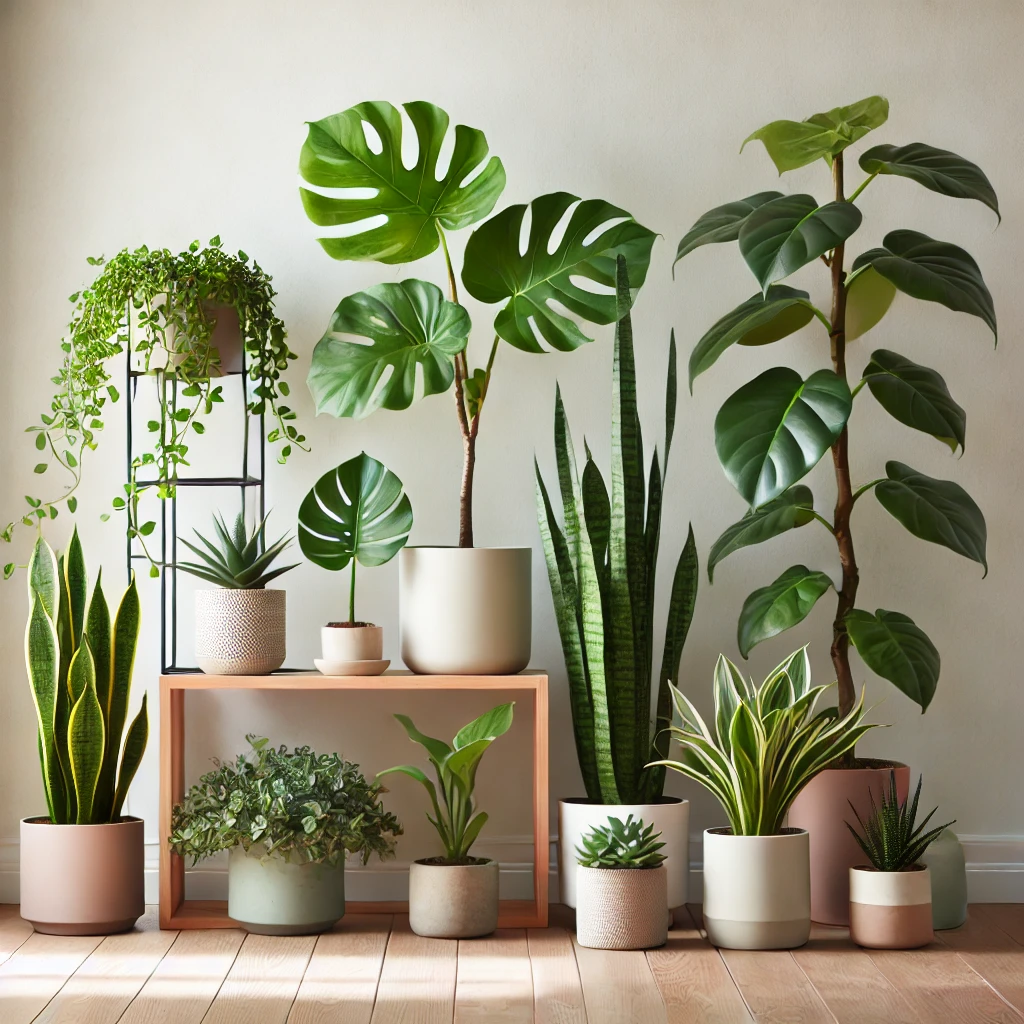Imagine having fresh, homegrown vegetables at your fingertips, all year round, regardless of the season or weather conditions. With the innovative “Indoor Vegetable Garden,” this dream becomes a reality. This compact and user-friendly system allows you to cultivate a variety of vegetables right in the comfort of your own home. Say goodbye to the limitations of outdoor gardening and hello to a new level of convenience and sustainability. Say hello to a bountiful indoor garden that will keep you nourished and satisfied throughout the year.

Benefits of Indoor Vegetable Gardens
Improved air quality
One of the major benefits of having an indoor vegetable garden is the improvement in air quality. Plants naturally absorb carbon dioxide and release oxygen through the process of photosynthesis. By having vegetables growing indoors, you can increase the oxygen levels in your home, making it a healthier and more refreshing environment to be in. In addition, plants can also help filter out toxins and pollutants, further improving the overall air quality.
Year-round gardening
With an indoor vegetable garden, you can enjoy the pleasure of gardening all year round, regardless of the weather outside. You no longer have to wait for the right season to plant your favorite vegetables. By creating a controlled environment indoors, you can extend the growing season and have a constant supply of fresh produce throughout the year. This allows you to have a diverse range of vegetables and herbs right at your fingertips.
Reduced pesticide use
Growing vegetables indoors gives you better control over pest infestations. Unlike outdoor gardens, indoor vegetable gardens are less susceptible to common garden pests such as aphids, slugs, and snails. This means that you can significantly reduce the use of pesticides and harmful chemicals. With proper care and maintenance, you can keep your plants healthy without relying on synthetic pesticides, creating a safer and more eco-friendly environment.
Access to fresh produce all year
By having an indoor vegetable garden, you can enjoy the convenience of having fresh produce available to you at all times. There’s no need to worry about making trips to the grocery store or waiting for the farmers’ market to be in season. With your own indoor garden, you can simply pluck the vegetables you need whenever you want, ensuring that you always have a supply of nutritious and delicious food on hand.
Promotes mental well-being
Gardening, whether indoors or outdoors, has been known to have a positive effect on mental well-being. The act of nurturing plants and seeing them grow can be therapeutic and rewarding. Indoor vegetable gardening provides an opportunity to connect with nature and participate in a fulfilling hobby. Taking care of your plants and watching the fruits of your labor can bring a sense of accomplishment and joy, reducing stress and improving overall mental health.
Selecting the Right Vegetables
Consider the available space
Before starting your indoor vegetable garden, it’s essential to consider the available space in your home. Evaluate the area where you plan to set up your garden and determine how much space you can allocate for your plants. Consider factors such as the size of the containers, the spreading habit of the plants, and the height they can grow to. Understanding these spatial requirements will help you choose vegetables that can thrive in the available space without overcrowding or hindering their growth.
Choose vegetables that thrive indoors
Not all vegetables are well-suited for indoor gardening. Some require more space, sunlight, and specific growing conditions. When selecting vegetables for your indoor garden, opt for varieties that are known to thrive indoors. Leafy greens like lettuce, spinach, and kale are excellent choices as they grow well in containers and have relatively short growth cycles. Herbs such as basil, mint, and parsley are also ideal for indoor gardening as they can be grown in smaller containers and provide a fresh and aromatic addition to your meals.
Consider your culinary preferences
When choosing vegetables for your indoor garden, it’s important to consider your culinary preferences. Think about the types of vegetables you and your family enjoy eating the most. By growing your favorites, you can ensure a plentiful supply of fresh ingredients for your recipes. Additionally, consider the versatility of the vegetables you choose. Opt for those that can be used in a variety of dishes, allowing you to experiment and create flavorful meals with your homegrown produce.

Container and Soil Selection
Choosing the right containers
Selecting the right containers is crucial for the success of your indoor vegetable garden. Containers should have adequate drainage holes to prevent water from accumulating and causing root rot. Opt for containers made of materials such as plastic, ceramic, or terracotta. Plastic containers are lightweight and easy to move, while ceramic and terracotta containers provide better insulation and aesthetics. The size of the containers should be appropriate for the specific vegetable’s root system and growth habits.
Selecting the appropriate soil
Choosing the appropriate soil is essential for the health and growth of your indoor vegetable plants. Look for potting mixes that are specifically formulated for container gardening. These mixes are well-draining and provide the necessary nutrients for the plants. Avoid using garden soil, as it may be too heavy and compact, inhibiting root development and proper drainage. Consider adding organic matter such as compost or peat moss to improve the soil’s fertility and water retention capability.
Importance of drainage
Proper drainage is crucial when it comes to container gardening. Excess water can lead to root rot and other moisture-related issues. To ensure good drainage, elevate your containers by placing them on saucers or using pot feet. This allows excess water to drain freely and prevents the roots from sitting in water. Furthermore, periodically check the saucers and remove any standing water to prevent soil saturation. Adequate drainage will promote healthy root development and prevent water-related problems in your indoor vegetable garden.
Lighting for Indoor Vegetable Gardens
Understanding light requirements
Light is one of the most critical factors for the success of an indoor vegetable garden. Different vegetables have varying light requirements, ranging from full sun to partial shade. Understanding the light requirements of the vegetables you choose will help you provide them with the appropriate lighting conditions for optimum growth. Leafy greens generally require less intense light, while fruiting vegetables like tomatoes and peppers need more direct sunlight to thrive.
Evaluating natural light availability
Before supplementing with artificial lighting, it’s important to evaluate the natural light availability in your home. Identify the areas that receive the most sunlight during the day, such as south- or west-facing windows. Place your vegetable plants in these areas to take advantage of the natural sunlight. Monitor the intensity and duration of the sunlight that reaches your plants, and adjust their placement accordingly. Keep in mind that the quality of natural light can vary throughout the year, so periodic evaluation is necessary.
Supplementing with artificial lighting
If natural light is limited or insufficient, supplementing with artificial lighting becomes necessary. Grow lights, specifically designed for indoor gardening, can provide the necessary spectrum and intensity of light required for optimal plant growth. Choose lighting systems that mimic natural sunlight, such as full-spectrum LED or fluorescent lights. Position the lights at an appropriate distance above the plants to ensure adequate coverage. Adjust the duration and intensity of the artificial lighting based on the specific needs of your vegetable plants.
Watering and Fertilizing
Establishing a watering routine
Consistent and appropriate watering is crucial for the health and productivity of your indoor vegetable plants. Establishing a watering routine will help you maintain the right moisture levels. Before watering, check the moisture level of the soil using your finger or a moisture meter. Water your plants thoroughly until water starts to drain from the bottom of the container. Avoid overwatering, as it can lead to root rot. Adjust the frequency of watering based on the specific needs of your vegetables and the moisture retention capacity of your soil.
Testing moisture levels
To ensure optimal watering, it’s important to regularly test the moisture levels of the soil. Stick your finger about an inch deep into the soil to assess its moisture content. If the soil feels dry at this depth, it’s an indication that watering is needed. If the soil feels slightly damp, it’s best to wait before watering to prevent overwatering. Monitoring the moisture levels of the soil will help you develop a watering routine that meets the specific needs of your vegetables and ensures their healthy growth.
Understanding fertilizer requirements
Indoor vegetable plants rely on the nutrients available in the potting soil, which may become depleted over time. Fertilizing your plants is essential to replenish these nutrients and promote healthy growth. Incorporate organic fertilizers into your routine, as they provide a gradual release of nutrients and improve soil fertility. Choose fertilizers specifically formulated for vegetables and follow the recommended application rates. However, it’s important not to over-fertilize, as this can lead to nutrient imbalances and harm the plants. Regularly monitor the overall health of your plants to determine if fertilizer adjustments are necessary.
Pest Control Methods
Identifying common indoor pests
While indoor vegetable gardens are relatively less susceptible to pests, it’s important to be vigilant and identify common indoor pests. The most common pests that can affect indoor vegetable plants include aphids, fungus gnats, spider mites, and whiteflies. Learn to recognize the signs of pest infestation, such as yellowing leaves, stunted growth, or the presence of small insects. Regularly inspect your plants to catch any pest problems early and take appropriate action to prevent further damage.
Prevention through proper hygiene
Proper hygiene plays a crucial role in preventing pest infestations in your indoor vegetable garden. Start by regularly cleaning your containers and removing any fallen leaves or debris from the soil surface. Avoid overwatering, as damp soil can attract pests. Inspect new plants or seeds before introducing them to your garden to ensure they are pest-free. Additionally, regularly wipe down the leaves of your plants with a damp cloth to remove dust and potential pest eggs. By adopting these hygienic practices, you can significantly reduce the risk of pest infestations.
Implementing natural pest control methods
When dealing with pests in your indoor vegetable garden, it’s best to opt for natural pest control methods. Chemical pesticides can have harmful effects on both the environment and your health. Instead, use natural alternatives such as insecticidal soaps, neem oil, or homemade remedies like vinegar solutions or garlic sprays to deter pests. Introduce beneficial insects like ladybugs or lacewings, which can help control pest populations. Additionally, promote a diverse and healthy ecosystem by incorporating companion plants that repel pests and attract beneficial insects.

Temperature and Humidity Considerations
Maintaining optimal temperature
Temperature plays a crucial role in the growth and development of indoor vegetable plants. Most common vegetables prefer temperatures between 60°F and 75°F (15°C to 24°C) during the day and slightly cooler temperatures at night. To maintain optimal temperatures, avoid placing your plants near cold drafts or heat sources. Use a thermometer to monitor the temperature in different areas of your indoor garden and adjust the placement of your plants accordingly. Maintaining stable and appropriate temperatures will promote healthy growth and prevent stress-related issues in your vegetables.
Monitoring humidity levels
Humidity levels can significantly impact the health and productivity of your indoor vegetable garden. Most vegetables prefer moderate humidity levels ranging from 40% to 60%. Low humidity can lead to dry or shriveled leaves, while high humidity can create a favorable environment for fungal diseases. Use a hygrometer to monitor the humidity levels in your indoor garden. If the humidity is too low, increase it by placing a tray of water near the plants or using a humidifier. On the other hand, if the humidity is too high, improve ventilation or use a dehumidifier to decrease moisture levels.
Dealing with extreme temperature conditions
Extreme temperature conditions can pose challenges for indoor vegetable gardens. During colder months, ensure that your plants are protected from drafts and provide them with additional insulation if necessary. Consider using plant covers or cloths to shield your plants from cold temperatures. In warmer months, keep an eye on the temperature and provide adequate ventilation and airflow to prevent overheating. If temperatures become too extreme, consider using fans or shades to provide relief to your plants. By managing extreme temperature conditions, you can create a more stable and conducive environment for your indoor vegetable garden.
Pruning and Shaping Plants
Understanding the importance of pruning
Pruning plays a crucial role in maintaining the health and shape of your indoor vegetable plants. Regular pruning helps remove dead or damaged leaves, promotes airflow, and stimulates new growth. It also helps control the size and shape of the plants, making them more manageable in limited indoor spaces. Pruning also promotes better fruit development and can prevent the spread of diseases. By regularly inspecting your plants and practicing proper pruning techniques, you can ensure healthy and thriving indoor vegetable plants.
Pruning techniques for indoor vegetables
When pruning indoor vegetable plants, focus on removing dead or yellowing leaves, as well as any damaged or diseased parts of the plant. Use clean, sharp pruning shears or scissors to make clean cuts just above a leaf node or bud. Avoid excessive pruning, as it can stress the plants and reduce their productivity. Pay attention to the growth habit of each vegetable and prune accordingly to maintain desirable shapes and prevent overcrowding. Regularly monitor your plants for new growth and adjust your pruning routine as needed.
Training plants to grow in desired shapes
Indoor vegetable gardening allows you to experiment with different shapes and forms for your plants. Consider training your plants to grow in desired shapes or structures using trellises, stakes, or plant supports. This can help optimize space utilization and improve the overall aesthetics of your indoor garden. Certain vegetables like tomatoes and cucumbers respond particularly well to training and can be grown in various forms such as espaliers, single stems, or hanging baskets. By training your plants, you can create a unique and visually appealing indoor vegetable garden.

Harvesting and Storage
Knowing when to harvest vegetables
Knowing when to harvest your indoor vegetables is essential for optimum flavor and nutritional value. Each vegetable has specific signs that indicate it is ready for harvest. Leafy greens such as lettuce and spinach can typically be harvested when the outer leaves are large and mature. Fruiting vegetables like tomatoes and peppers are usually ready when the fruits are fully colored and firm. Consult seed packets or gardening resources for the specific harvest indications for each vegetable. Regularly inspect your plants and harvest the vegetables at their peak to enjoy the best taste and quality.
Proper post-harvest handling
Proper post-harvest handling is crucial to maximize the freshness and longevity of your harvested indoor vegetables. Immediately after harvesting, gently wash the vegetables to remove any dirt or debris. Pat them dry with a clean cloth or paper towel before storing. Remember to handle delicate vegetables with care to avoid bruising or damage. For leafy greens, consider storing them in airtight containers with a damp paper towel to maintain their crispness. Fruiting vegetables can be placed in a cool, well-ventilated area to prolong their shelf life. By following these post-harvest practices, you can enjoy your harvested produce for longer periods.
Methods for storing harvested produce
Storing harvested produce properly is vital to avoid spoilage and extend the shelf life of your vegetables. Leafy greens like lettuce and spinach can be stored in the refrigerator in airtight containers or plastic bags for up to a week. Root vegetables such as carrots or radishes can also be stored in the refrigerator, but make sure to remove the greens before storing. Fruiting vegetables like tomatoes and peppers can be stored at room temperature, away from direct sunlight, for several days. Consider preserving excess produce by freezing, canning, or drying, ensuring a continued supply of homegrown vegetables throughout the year.
Common Challenges and Troubleshooting
Dealing with plant diseases
Despite your best efforts, indoor vegetable plants can still be susceptible to various plant diseases. Common plant diseases in indoor gardens include powdery mildew, damping-off, and root rot. To prevent diseases, practice good hygiene, ensure proper airflow, and avoid overwatering. If you notice signs of disease, promptly remove and discard the affected parts to prevent further spread. Consider using organic fungicides or natural remedies like neem oil to control fungal infections. Taking proactive measures and closely monitoring the health of your plants will help you tackle diseases and maintain a healthy indoor vegetable garden.
Identifying nutrient deficiencies
Nutrient deficiencies can manifest in various ways in your indoor vegetable plants. Yellowing leaves, stunted growth, and abnormal fruit development are common signs of nutrient deficiencies. Regularly monitor your plants’ foliage for any abnormalities and learn to identify specific nutrient deficiency symptoms. Adjust your fertilization routine accordingly to address these deficiencies. Organic amendments, such as compost or fish emulsion, can help replenish lacking nutrients. In severe cases, consider using specific nutrient supplements to provide a quick boost of the necessary elements. By addressing nutrient deficiencies promptly, you can ensure the optimal growth and productivity of your vegetables.
Addressing growth issues
Sometimes, indoor vegetable plants may encounter growth issues, such as leggy or spindly stems, poor fruit set, or slowed growth. These issues are typically related to environmental factors such as insufficient light, improper watering, or temperature extremes. Identify the underlying cause of the growth issue and adjust your care routine accordingly. Provide adequate lighting or supplement with artificial lights, ensure proper watering practices, and maintain stable temperature and humidity levels. Regularly assess and fine-tune the environmental conditions of your indoor garden to address growth issues and promote healthy and vigorous growth in your vegetables.
By following these guidelines and implementing the recommended practices, you can create a thriving and productive indoor vegetable garden. Enjoy the numerous benefits of growing your vegetables indoors, from improved air quality to year-round access to fresh produce. Experiment with different vegetables, optimize their growing conditions, and embrace the joy of nurturing your own homegrown vegetables. Happy indoor gardening!


